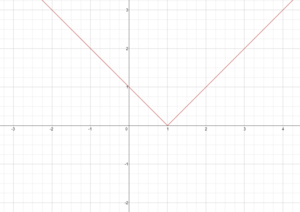Science:Math Exam Resources/Courses/MATH110/April 2013/Question 01 (c)
{{#incat:MER QGQ flag|{{#incat:MER QGH flag|{{#incat:MER QGS flag|}}}}}}
• Q1 (a) • Q1 (b) • Q1 (c) • Q1 (d) • Q2 (a) • Q2 (b) • Q2 (c) • Q2 (d) • Q3 (a) • Q3 (b) • Q3 (c) • Q3 (d) • Q3 (e) • Q4 • Q5 • Q6 • Q7 • Q8 • Q9 (a) • Q9 (b) •
Question 01 (c) |
|---|
|
Determine whether the following statement is true or false. If it is true, provide justification. If it is false, provide a counterexample. (c) If ƒ has a local minimum at 1, then ƒ'(1) = 0. |
|
Make sure you understand the problem fully: What is the question asking you to do? Are there specific conditions or constraints that you should take note of? How will you know if your answer is correct from your work only? Can you rephrase the question in your own words in a way that makes sense to you? |
|
If you are stuck, check the hint below. Consider it for a while. Does it give you a new idea on how to approach the problem? If so, try it! |
Hint |
|---|
|
Recall the definition of a critical point. Is there more than just the criteria that its derivative is zero? |
|
Checking a solution serves two purposes: helping you if, after having used the hint, you still are stuck on the problem; or if you have solved the problem and would like to check your work.
|
Solution |
|---|
|
The statement is false. A minimum always occurs at a critical point - however, there are two possible reasons for a critical point: either or does not exist. In this second case, the derivative is not equal to zero, but there can still be a local minimum. For example, the derivative does not exist if there is a cusp (sharp corner), a vertical tangent or the function is discontinuous; an example of a cusp is given below: In this case there is a minimum at x = 1 but does not exist, so it can't be equal to zero. So we found a counter example and hence the statement is false. |
{{#incat:MER CT flag||
}}



